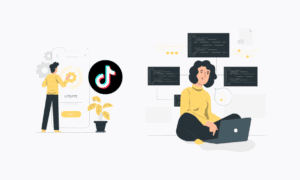How Occupational Therapists Use Technology to Enhance Client Outcomes
The Role of Technology in Modern Occupational Therapy
Occupational therapy has significantly evolved over the past few decades. No longer limited to hands-on interventions, modern occupational therapists now leverage cutting-edge technologies to personalise care, increase access, and drive better client outcomes. From digital platforms to assistive devices, technology is reshaping the field to better support individuals across all age groups and abilities.
The integration of technology into occupational therapy has become essential, particularly in response to the growing demand for remote services and evidence-based practices. Whether working with children, adults, or seniors, therapists are increasingly turning to tech-driven tools to support assessment, intervention, and monitoring – all while promoting independence and functional recovery.
Assistive Technology in Daily Living
For many clients receiving occupational therapy, assistive technology plays a crucial role in regaining or maintaining independence. These tools are specially designed to support individuals with physical, sensory, or cognitive impairments, allowing them to participate more fully in everyday activities.
Use of Adaptive Tools
Occupational therapists often recommend adaptive tools that integrate with modern living spaces. Voice-activated devices, such as Amazon Alexa or Google Nest, enable clients with mobility limitations to control lighting, adjust thermostats, or set reminders using simple verbal commands. Smart home systems can also automate tasks like opening doors or operating appliances, giving clients greater autonomy in their own homes.
Devices for Motor Function Assistance
Clients experiencing motor function challenges—whether due to injury, developmental conditions, or neurological disorders—benefit from specially designed hardware that makes interaction with their environment easier. These include:
- Ergonomic keyboards and mice tailored to reduce strain and accommodate limited dexterity.
- Switch controls that enable users to operate computers, tablets, or even household items with a single movement, such as a blink or tap.
These tools help reduce physical barriers and enable individuals to engage in communication, education, and recreation.
Examples in Practice
Occupational therapists frequently incorporate assistive technology into personalised treatment plans. Common examples include:
- Wheelchair-mounted tablets, which allow users to communicate, access entertainment, or manage tasks through accessible interfaces.
- Memory aids, such as wearable devices or smartphone apps, which support clients dealing with cognitive impairments due to brain injury or dementia.
- Environmental control units (ECUs) that give users remote access to devices throughout their home, promoting independence without reliance on caregivers.
By incorporating these technologies, occupational therapists enhance their clients’ quality of life—making once-difficult tasks more manageable and less stressful.
Telehealth and Remote Interventions
The integration of telehealth into occupational therapy has transformed service delivery, especially for individuals in rural areas of British Columbia or those with mobility challenges. Occupational therapists are increasingly using virtual care to make therapy more accessible, flexible, and responsive to client needs.
Benefits for Rural and Mobility-Limited Clients
One of the greatest advantages of tele-occupational therapy is its ability to bridge the gap for clients living in remote or underserved communities. For those in smaller towns outside the Lower Mainland, travelling to a clinic can be time-consuming or even impossible.
Similarly, individuals with mobility restrictions—whether due to injury, chronic illness, or disability—benefit from receiving care in the comfort and familiarity of their own homes. Telehealth eliminates physical barriers and reduces the stress of travel, allowing clients to focus on their recovery.
Video Conferencing for Therapy and Education
Occupational therapists use secure video conferencing platforms to conduct:
- Initial assessments, including functional evaluations and environmental scans.
- Client and caregiver education, offering real-time guidance on techniques, equipment, and adaptations.
- Exercise sessions, where therapists demonstrate and monitor movements to support rehabilitation and progress.
This approach allows therapists to observe how clients perform tasks within their natural environments, offering valuable insights that aren’t always possible in clinic-based settings.
Secure Platforms for Communication and Monitoring
Maintaining confidentiality and ensuring effective communication are key components of virtual care. Occupational therapists utilise secure, encrypted platforms approved for healthcare use to:
- Conduct private video calls.
- Share documents and therapy plans.
- Monitor client progress through digital forms or interactive apps.
Some platforms even include real-time tracking tools that record activity levels, goal achievement, and engagement, helping therapists adjust treatment plans based on measurable outcomes.
Software and Digital Tools for Tracking Progress
In today’s digital age, occupational therapists are increasingly turning to software and smart tools to monitor client progress, personalise treatment plans, and enhance engagement. These technologies provide data-driven insights that help improve outcomes while keeping therapy sessions interactive and client-focused.
Electronic Documentation and Data Tracking
Electronic medical records (EMRs) have become standard practice in most clinical settings, allowing therapists to:
- Maintain accurate, up-to-date client files.
- Track assessments, interventions, and outcomes.
- Share progress notes with interdisciplinary care teams in real time.
These platforms streamline documentation, reduce administrative workload, and support continuity of care across multiple providers.
Some practices also use data tracking software that captures metrics such as session frequency, client-reported outcomes, and functional gains—making it easier to identify trends and adjust treatment plans accordingly.
Mobile Apps for Goal Setting and Therapy Reminders
To encourage client participation between sessions, many occupational therapists recommend mobile apps that allow users to:
- Set personal goals and track their achievements.
- Receive reminders for daily exercises, medication, or self-care tasks.
- Log progress and report symptoms or challenges.
These apps promote consistency and accountability, while also enabling therapists to monitor adherence and engagement remotely. For children and tech-savvy adults, the use of mobile tools often increases motivation and builds a stronger sense of ownership over the rehabilitation process.
Virtual Reality and Gamified Therapy
Emerging technologies like virtual reality (VR) and gamified therapy programmes are revolutionising how occupational therapy is delivered—especially for clients needing cognitive, motor, or sensory rehabilitation.
Examples include:
- Interactive VR environments for practising daily tasks in a safe, controlled setting.
- Tablet-based games that improve hand-eye coordination, fine motor skills, or memory.
- Wearable motion sensors that provide feedback during exercises or simulate real-world movements.
These tools make therapy more immersive and engaging, particularly for children, stroke survivors, and individuals recovering from brain injuries.
Emerging Innovations: What’s Next for OT Tech
As technology continues to evolve, occupational therapists are exploring emerging innovations that promise to further transform the field. These cutting-edge tools offer the potential to make assessments more accurate, interventions more targeted, and therapy more responsive to individual needs.
AI-Powered Assessments
Artificial intelligence (AI) is beginning to play a role in occupational therapy assessments, helping therapists analyse data more efficiently and identify patterns that may not be immediately visible. AI-powered tools can:
- Interpret motion capture data for gait and posture analysis.
- Predict risks based on health history and behaviour trends.
- Customise treatment suggestions using machine learning algorithms.
While still in the early stages of implementation, AI has the potential to streamline decision-making and support more proactive, preventative care.
Wearable Devices for Movement Tracking
Wearables such as smartwatches, activity bands, and motion sensors are becoming valuable tools for tracking client movement and activity levels. These devices provide real-time data on:
- Range of motion
- Step count and balance
- Sleep quality and stress markers
Occupational therapists use this data to tailor exercise programmes, monitor compliance, and adjust goals based on actual performance—not just self-reporting.
Robotics in Rehabilitation
Robotic therapy devices are gaining traction in advanced rehabilitation settings. These include:
- Robotic exoskeletons to support walking or upper limb movement in clients with spinal cord injuries or stroke-related impairments.
- Interactive robotic arms used in fine motor training.
- Automated resistance tools for progressive strength-building.
While not yet widespread in everyday practice, these tools are being piloted in hospitals and private clinics across Canada, as part of research-backed therapy programmes.



































